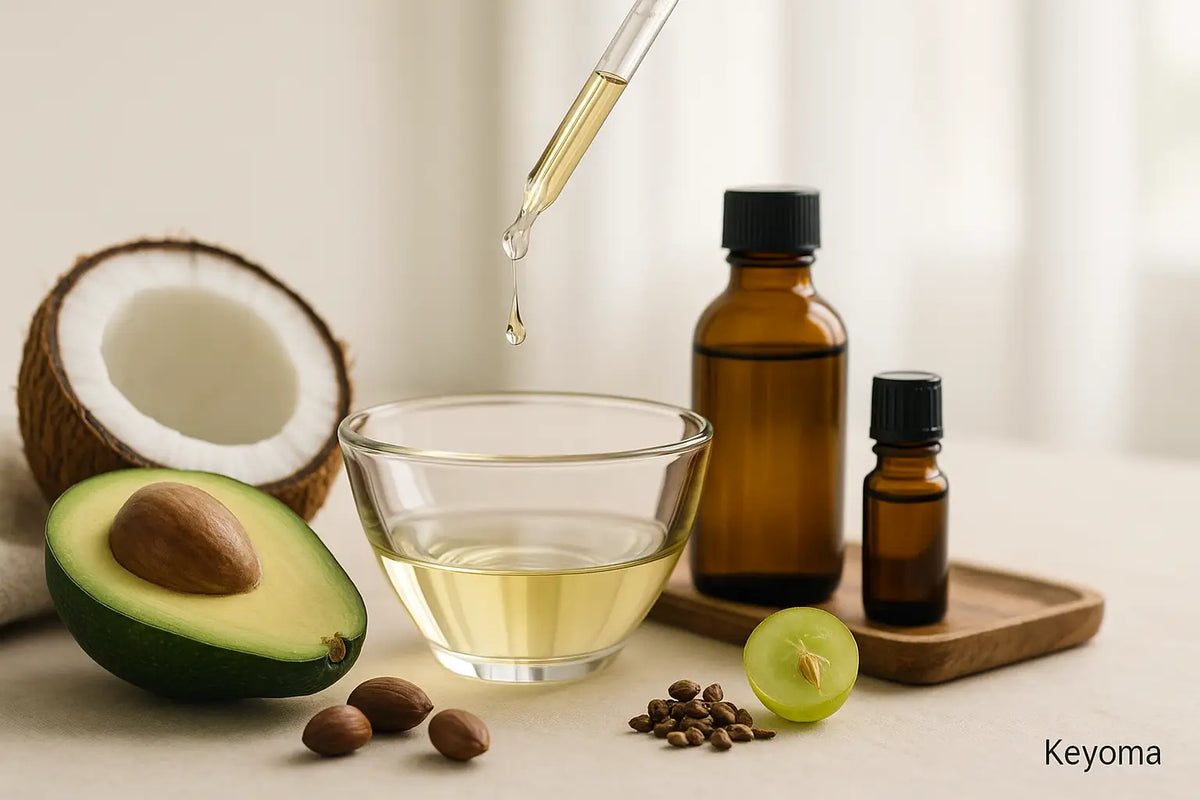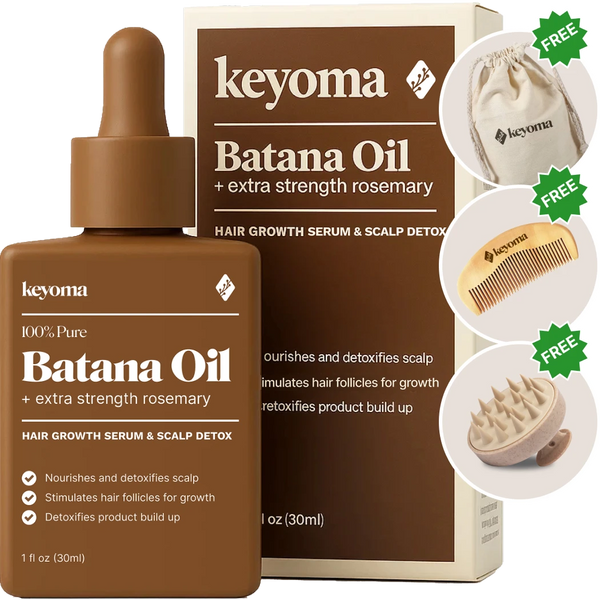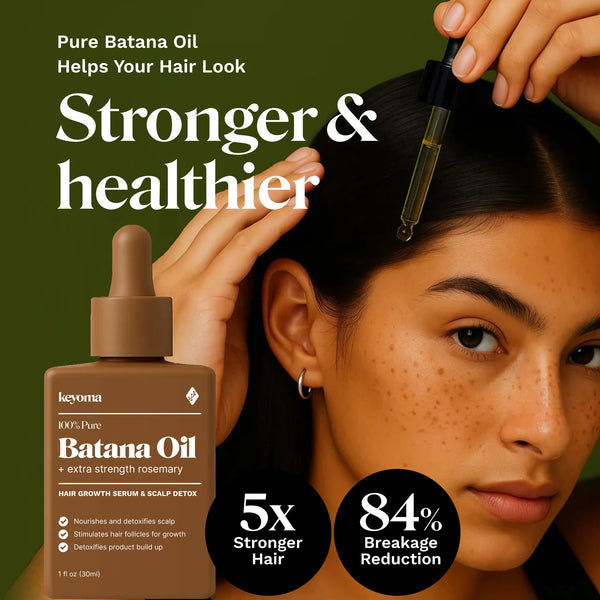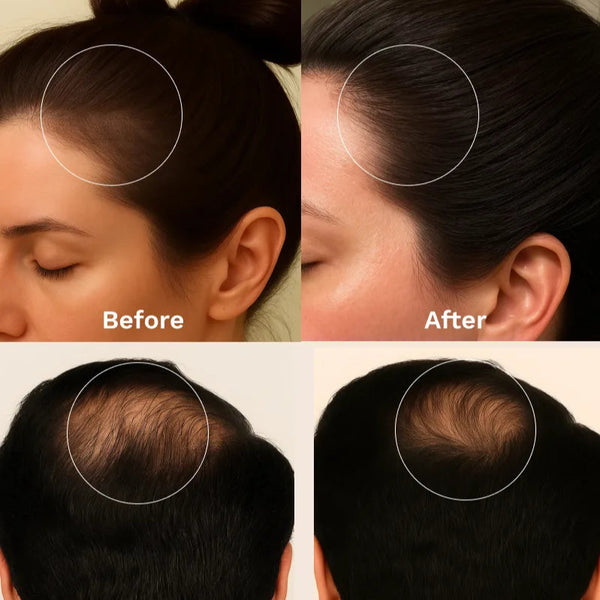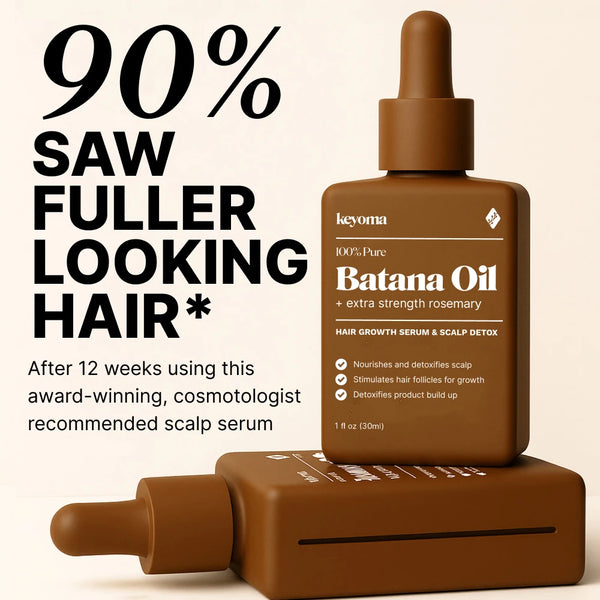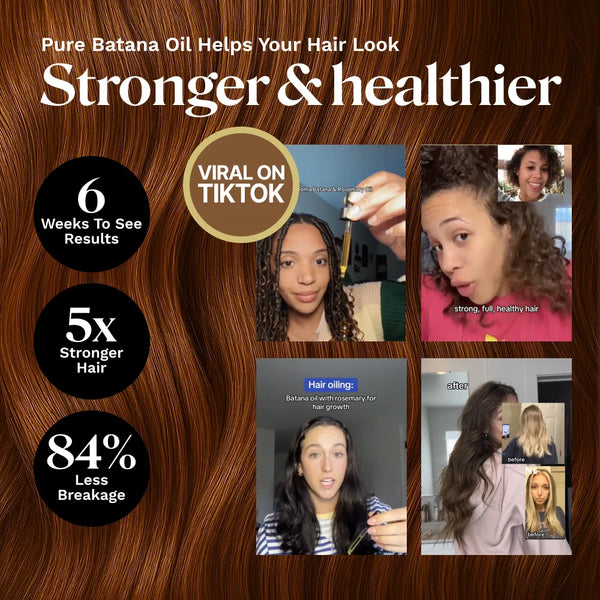In this article
Carrier oils sit at the core of many beauty products, whether you notice or not.
From everyday hair serums to rich facial cleansers and spa-style massage oils, carrier oils create the base of many staples that keep your routine steady.
They also pair closely with essential oils because their lighter textures let you apply those potent extracts safely to skin.
So what is a carrier oil, how do they help, and what truly separates one effective carrier oil from another?
Use this quick guide to well-known carrier oils and their benefits so you can pick with confidence.
Key Takeaways
- Carrier oils dilute essential oils, provide slip, nutrients, and reduce skin irritation.
- Usually cold-pressed vegetable oils from seeds or nuts, they preserve heat-sensitive compounds.
- Selection considers hair needs, allergies, oxidation, scent, purity, and application goals.
- Dilute essential oils before use, patch test, and avoid nut oils with allergies.
What is a carrier oil?
People produce essential oils by distilling aromatic plant parts like leaves, flowers, bark, and roots. Applied straight to skin, these concentrated oils may trigger reactions such as irritation, flushing, or burning.
Carrier oils dilute essential oils and help carry them across the skin’s surface. Some people also use aloe gels or unscented lotions as carriers.
Most carrier oils are vegetable oils pressed from seeds, kernels, or nuts.
Many are obtained through cold pressing, where the plant is pressed or crushed without heat. This minimal processing can help preserve bioactive compounds in the oil.
Some have little to no scent, but many carry a light, sweet, nutty smell. Unlike essential oils, they don’t evaporate.
15 Best Carrier Oils and When to Use Them
Carrier oils make up most blends. For me, lighter oils rinsed out easier and left less residue. They thin essential oils so skin stays comfortable, add slip for massage, and offer nutrients. Use the checklist below to decide what to try first.
-
Hair and scalp needs
-
Allergies and sensitivity
-
Purity and processing
-
Shelf life and oxidation
-
Finish and scent
-
Application intent
Keep these points in mind as you scan the options below. Each entry notes when the oil fits, how it feels, and easy ways to use it.

1. Batana Oil
Batana oil is a rare, unrefined oil cold-pressed from kernels of the American palm (Elaeis oleifera). Long valued by the Miskito people of Honduras, it’s now widely known as a rich “liquid gold.” High in vitamin E, linoleic and palmitic acids, and carotenoids, it supports hair and skin formulas with strength and nourishment.
In hair masks and scalp treatments, Batana Carrier Oil can smooth frizz, boost shine, and improve manageability, especially for curly, coily, or dry textures.
In creams and body care, it replenishes moisture and leaves skin soft and supple. Its deep brown color and smoky, coffee-like scent add natural character and sensory depth, which is why many products seek it out.
2. Coconut Oil
Coconut oil is an edible oil pressed from mature coconut meat. You can find it as refined or unrefined.
Unrefined coconut oil comes from fresh coconut meat. It skips chemical processing and keeps its natural coconut scent and taste.
Refined coconut oil is made from dried coconut meat, or copra. It’s bleached and deodorized to remove impurities and the strong coconut aroma. Because it isn’t fully natural, it’s not the best choice as a carrier oil.
3. Jojoba Oil
Jojoba oil is pressed from jojoba seeds and has a light, nutty smell. Technically a wax, it’s known for strong moisturizing properties and closely resembles skin’s sebum.
For acne-prone skin, using jojoba oil may reduce oil output by signaling that the skin already has enough.
4. Evening Primrose Oil
Evening primrose oil has a long history in traditional use. Some studies suggest it may improve quality of life in multiple sclerosis and help lessen eczema symptoms.
Aromatherapists often blend evening primrose with other carriers. Its high essential fatty acid content means it can spoil and turn rancid quickly.
5. Olive Oil
Olive oil is pressed from olives. Famous as a healthy cooking oil with a fruity aroma, it also works as a carrier in aromatherapy.
Extra-virgin olive oil is typically preferred for skin and aromatherapy blends. Note that its scent can compete with some essential oils.
6. Argan Oil
Argan oil comes from kernels inside argan fruit native to Morocco. Edible and traditional, it has a nutty scent and is rich in vitamins A and E and monounsaturated fats.
7. Sweet Almond Oil
Sweet almond oil has a pronounced, nutty aroma. This edible oil from almond kernels is lightweight, absorbs well, and makes a solid moisturizer for dry skin.
It’s common in aromatherapy too, though its strong scent can overshadow an essential oil’s aroma.
8. Grape Seed Oil
Grape seed oil is a byproduct of winemaking and comes from grape seeds. It’s high in vitamin E, which is thought to support skin repair and reduce wrinkles, though findings are mixed.
9. Rosehip Oil
Rosehips are the seeds of Rosa rubiginosa or Rosa moschata. These flowers differ from classic roses. When petals fall, the seed pod remains and is pressed to make rosehip oil.
Despite the name, rosehip oil doesn’t smell like roses. Expect a nutty, earthy scent.
10. Castor Oil
Many people recognize castor oil mostly for digestive support.
That’s true, and its thick, honey-like texture is well known, but there’s more to it than a natural laxative.
Castor oil is rich in ricinoleic acid, a compound that can moisturize and support repair in dry, irritated, or scarred skin.
In turn, this has also been shown to support hair health and thickness, since ricinoleic acid can help with dandruff and other scalp irritations.
11. Black Seed Oil
Black seed oil comes from the Nigella sativa plant. Though less common than other carriers, it’s rich in both unsaturated and saturated fatty acids and is thought to have anti-inflammatory effects.
12. Sea Buckthorn Oil
Known as “the holy fruit of the Himalayas,” sea buckthorn oil has a striking deep red color uncommon among carrier oils.
It’s packed with antioxidants that may help protect skin from external stressors while supporting strength, brightness, and elasticity.
Many sources connect sea buckthorn oil with wound and burn care, likely due to its palmitoleic acid content that can reduce harmful microbes and local irritation.
It’s also noted for helping improve hair damage and restoring elasticity.
13. Avocado Oil
Avocado oil is a heavier, thick edible oil pressed from avocado fruit with a nutty aroma.
It’s high in oleic acid, a monounsaturated fat thought to support dry, damaged skin.
14. Apricot Kernel Oil
Apricot kernel oil is pressed from apricot seeds. As an emollient rich in fatty acids and vitamin E, it sinks in easily and carries a slightly sweet, nutty scent. You can buy edible versions or cosmetic-only oils.
15. Sunflower Oil
Sunflower oil is an edible oil extracted from sunflower seeds with a neutral smell.
It’s said to help reinforce the skin barrier against germs and toxins, making it a good pick for irritated skin.
How to Dilute Essential Oils with Carrier Oils
When you can, choose organic, cold-pressed carrier oils from a trusted source. A small, labeled dropper bottle made patch testing simpler for me. Most carrier oils don’t cause allergies, but always patch test before use.
Research points to potential benefits, but the FDA doesn’t monitor essential oil purity or quality. Talk with a healthcare professional before using essential oils, research brands, and always patch test new ones.
To perform a patch test:
-
Apply a tiny amount of carrier oil to your inner wrist or just below the ear.
-
Place a bandage over the spot.
-
Check the area again after 24 hours.
-
If you notice irritation, rinse well and stop using it.
If you’re allergic to tree nuts, avoid oils made from them, including sweet almond, argan, and apricot kernel oils.
When diluting essential oils with a carrier, follow these general dilution ratios.
Adults, use:
-
2.5 percent dilution: use 15 drops essential oil per 6 teaspoons carrier oil
-
3 percent dilution: use 20 drops essential oil per 6 teaspoons carrier oil
-
5 percent dilution: use 30 drops essential oil per 6 teaspoons carrier oil
-
10 percent dilution: use 60 drops essential oil per 6 teaspoons carrier oil
For children, try:
-
0.5 to 1 percent dilution: 3 to 6 drops essential oil per 6 teaspoons carrier oil
Store carrier oils in a cool, dark spot, ideally in the refrigerator, and keep them in dark glass bottles.
Start a Safe Rosemary–Carrier Blend Today With Keyoma
Carrier oils make scalp care straightforward when you match texture to your needs, patch test first, and store them well.
Start with one oil and keep massage pressure light. Give it a few weeks to see how your scalp and lengths react.
For a balanced, scalp-first option, try Keyoma Batana Oil with Rosemary. Use a few drops before a massage to add glide and nourish your scalp while you work.
Featured Product
100% Pure Batana Oil + Rosemary
↓Best Batana Oil to Buy↓
1 Month
Subscribe & Save
- 30-day supply delivered monthly $35
- 30% off for life $6
- Free haircare essentials kit $33
- Free custom wooden comb $10
- Free scalp massager $15
- Free eco-friendly travel bag $8
- 30-Day Money Back Guarantee
- Free Shipping
- Online portal for easy cancel, skip, or pause.
1 Month One Time Purchase
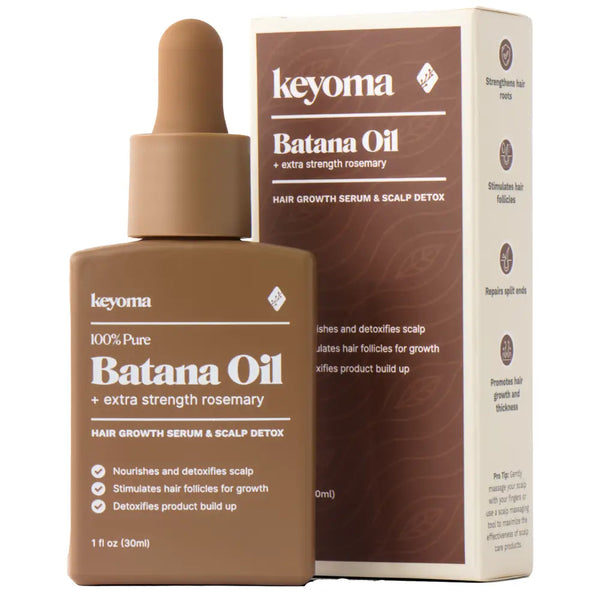
- 30-day supply $50
- 30% off for life $6
- Free haircare essentials kit $33
- Free custom wooden comb $10
- Free scalp massager $15
- Free eco-friendly travel bag $8

